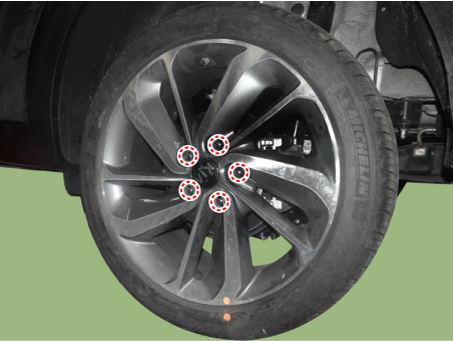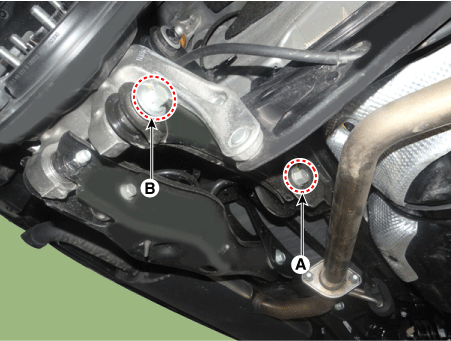Kia Niro: Rear Suspension System / Rear Assist Arm Repair procedures
| Removal |
| 1. |
Disconnect the battery negative cable. |
| 2. |
Remove the wheel and tire.
|
| 3. |
Loosen the bolts (A,B) and then remove the rear assist arm.
|
| 4. |
Install in the reverse order of removal. |
| 5. |
Check the wheel alignment. (Refer to Suspension System - "Alignment") |
| Inspection |
| 1. |
Check the bushing for wear and deterioration. |
| 2. |
Check all bolts and nut. |
 Rear Stabilizer Bar Repair procedures
Rear Stabilizer Bar Repair procedures
Removal
1.
Disconnect the battery negative cable.
2.
Remove the wheel and tire.
Tightening torque:
107.9 - 127.5 N·m ( ...
 Trailing Arm Repair procedures
Trailing Arm Repair procedures
Removal
1.
Disconnect the battery negative cable.
2.
Remove the wheel and tire.
Tightening torque:
107.9 - 127.5 N·m ( ...
Other information:
Kia Niro (DE HEV) Owners Manual: Storing positions into memory using the buttons on the door
Storing driver’s seat positions
1. Shift the shift lever into P while the engine start/stop button is ON or ignition
switch ON.
2. Adjust the driver’s seat and outside rearview mirror comfortable for the driver.
3. Press SET button on the control panel. The system will beep once.
4. Press ...
Kia Niro (DE HEV) Owners Manual: Operation tips
For maximum defrosting, set the temperature control to the extreme right/hot
position and the fan speed control to the highest speed.
If warm air to the floor is desired while defrosting or defogging, set the
mode to the floor-defrost position.
Before driving, clear all snow and ice fro ...



